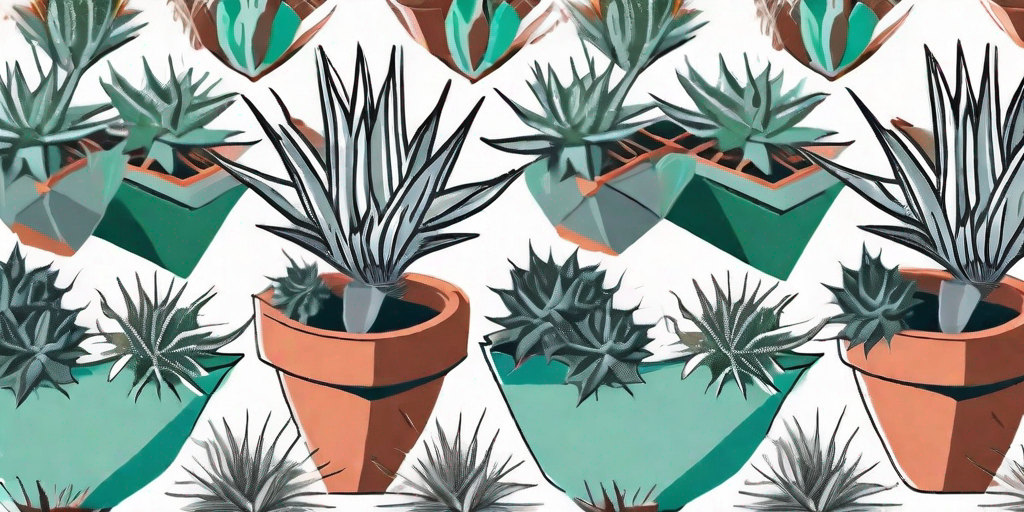
Welcome to the world of Dyckia, a succulent that is as stunning as it is resilient. This cheeky little plant, with its spiky leaves and vibrant flowers, is a showstopper in any garden. But don't be fooled by its good looks, this plant is not just a pretty face. It's a tough cookie that can withstand harsh conditions and still look fabulous. So, if you're ready to add a touch of glamour to your garden, let's dive into the wonderful world of Dyckia.
Understanding the Dyckia
Before we get into the nitty-gritty of how to care for a Dyckia, let's take a moment to appreciate this plant's unique characteristics. Dyckia is a genus of the Bromeliaceae family, which is native to the arid regions of Central and South America. This means that, unlike your needy ex, Dyckia is used to being neglected and can handle dry conditions like a champ.
One of the most striking features of Dyckia is its leaves. These are usually long, narrow, and covered in sharp spines. The leaves form a rosette shape, and in the center of this rosette, the plant produces a tall stalk that bears vibrant flowers. The flowers can be orange, yellow, or red, and they're a real treat for the eyes.
The Different Types of Dyckia
There are over 120 species of Dyckia, each with its own unique charm. Some popular ones include Dyckia 'Burgundy Ice', which has dark red leaves, and Dyckia 'Silver Superstar', which has silver leaves. There's a Dyckia for every taste, so whether you prefer a classic green or a bold red, there's a Dyckia out there for you.
Despite their differences, all Dyckias share some common traits. They're all drought-tolerant, they all love sunlight, and they all have a sassy attitude that says, "I can handle anything you throw at me."
How to Grow and Care for Dyckia
Now that we've gotten to know Dyckia a little better, let's talk about how to care for this plant. Despite its tough exterior, Dyckia does have some needs that should be met to ensure it thrives.
Light Requirements
Dyckia loves the sun. It's like that friend who's always trying to drag you to the beach, even in the middle of winter. So, if you want your Dyckia to be happy, make sure it gets plenty of sunlight. If you're growing it indoors, place it near a window where it can bask in the sun's rays.
However, keep in mind that while Dyckia loves the sun, it doesn't like to be scorched. So, if the sunlight in your area is particularly intense, you might want to provide some shade for your Dyckia during the hottest part of the day.
Watering Needs
Remember when we said Dyckia is used to being neglected? This is particularly true when it comes to watering. Dyckia is a drought-tolerant plant, which means it can survive without water for a long time. So, if you're the forgetful type, this plant is perfect for you.
When watering your Dyckia, it's better to err on the side of under-watering than over-watering. Too much water can cause the roots to rot, which is a surefire way to kill your plant. So, water your Dyckia sparingly, and always make sure the soil is dry before watering again.
Propagating Dyckia
One of the great things about Dyckia is that it's easy to propagate. This means you can create a whole army of Dyckias from just one plant. Imagine that, a garden full of these stunning succulents!
There are two main ways to propagate Dyckia: by seeds or by offsets. Propagating by seeds is a bit more challenging and requires patience, as it can take a while for the seeds to germinate. On the other hand, propagating by offsets is easier and faster. All you need to do is remove the offsets (the small plants that grow at the base of the mother plant), let them dry for a day or two, and then plant them in a pot with well-draining soil.
Frequently Asked Questions
Why are the leaves of my Dyckia turning yellow?
Yellow leaves can be a sign of over-watering. Remember, Dyckia is a drought-tolerant plant and doesn't need a lot of water. So, if the leaves are turning yellow, try reducing the amount of water you give your plant.
Can Dyckia survive in cold weather?
Dyckia is a tough plant, but it's not a fan of the cold. It can handle a bit of frost, but prolonged exposure to freezing temperatures can damage the plant. So, if you live in a cold area, it's best to grow your Dyckia indoors or in a greenhouse.
How often should I fertilize my Dyckia?
Dyckia doesn't need a lot of fertilizer. In fact, too much fertilizer can harm the plant. A light feeding once or twice a year is usually enough.
Conclusion
There you have it, a comprehensive guide to growing and caring for Dyckia. This stunning succulent is a great addition to any garden, and with the right care, it can thrive and bring you joy for many years. So, why not give Dyckia a try? You might just find that it's the perfect plant for you.
Remember, the key to a happy Dyckia is plenty of sunlight, minimal watering, and a sassy attitude. With these in mind, you're well on your way to unleashing the beauty of Dyckia.















